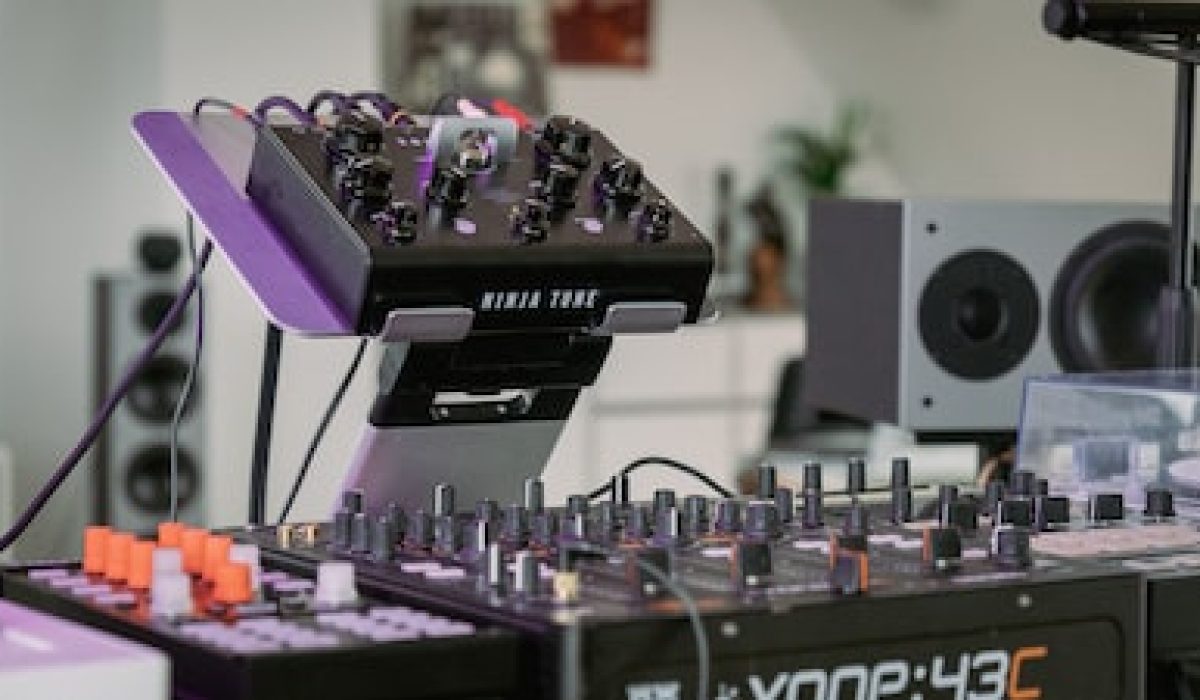Introduction To AV Equipments
AV equipments, also known as audiovisual equipments, play a crucial role in enhancing our audio and visual experiences. From large-scale events to personal entertainment systems, AV equipments have become an integral part of our daily lives. In this blog post, we will delve into the world of AV equipments, exploring the different types available, the numerous benefits they offer, common uses in various industries, important factors to consider when choosing the right equipment, and finally, how to effectively set up and maintain these systems for optimal performance. Whether you’re a tech enthusiast or simply curious about AV equipments, this blog post will provide valuable insights and useful tips for anyone interested in this fascinating field.
Introduction To Av Equipments ⏬
An Introduction to AV Equipment
AV equipment, or Audio-Visual equipment, refers to the tools and technologies used to present information both visually and audibly. These equipment are commonly used in various settings, such as classrooms, conference rooms, theaters, and even in our homes. AV equipment encompasses a range of devices, including projectors, screens, speakers, microphones, and audio and video players. The primary purpose of AV equipment is to enhance communication by providing visual and audio aids to convey messages effectively.
AV equipment plays a crucial role in various industries and sectors. In educational institutions, these tools are utilized to facilitate the learning process, making lessons more engaging and interactive. In business settings, AV equipment is used to conduct meetings, presentations, and conferences, enabling effective communication with clients, employees, and stakeholders.
Types Of Av Equipments
Types Of AV Equipment
AV (Audio-Visual) equipment refers to a wide range of technologies used for both audio and visual presentations. These tools have become an integral part of various industries, including education, business, entertainment, and more. In this blog post, we will explore the different types of AV equipment and their significant contributions to different sectors.
1. Projectors: Projectors are commonly used AV equipment that projects images or videos onto a screen or surface for a larger audience to view. They are widely utilized in classrooms, conference rooms, and theaters. Modern projectors come with advanced features like high resolution, enhanced brightness, and built-in speakers, offering a more immersive viewing experience.
2. Displays: AV displays, such as LCD screens, LED video walls, and plasma TVs, are used to showcase visual content effectively. Displays are available in various sizes, from small units for personal use to large displays used in stadiums and concerts. They are widely used in retail stores, cinemas, and digital signage applications.
3. Audio Systems: AV equipment is incomplete without high-quality audio systems, such as speakers, microphones, and amplifiers. These tools ensure clear sound reproduction during presentations, concerts, public speaking events, and more. Audio systems also play a crucial role in enhancing the overall experience of watching movies, TV shows, or performances.
4. Video Conferencing Tools: With the rise in remote work and global collaboration, video conferencing tools have become essential AV equipment. They include webcams, video cameras, and audio devices that facilitate communication between individuals or groups located in different geographical locations. Video conferencing tools have revolutionized the way businesses conduct meetings and interviews.
5. Recording Devices: Recording devices, such as digital cameras and camcorders, are used to capture and store audio and visual content for various purposes. These devices find applications in photography, cinematography, content creation, and preservation of important events or moments. They are essential for professionals in the media and entertainment industry.
Types of AV Equipment Common Uses Projectors Classrooms, conference rooms, theaters Displays Retail stores, cinemas, digital signage Audio Systems Presentations, concerts, public speaking events Video Conferencing Tools Remote work, business meetings, interviews Recording Devices Photography, cinematography, content creation
These are just a few examples of the various types of AV equipment available in the market. Each type serves a specific purpose and contributes to creating impactful audio and visual experiences. Understanding the different types of AV equipment can help individuals and organizations make informed decisions when selecting the appropriate tools for their specific needs.
Benefits Of Using Av Equipments 👇
AV (Audio Visual) equipment refers to the tools and devices used for presenting and transmitting sound and visual elements. These equipments enhance communication and improve the overall experience in various settings, including classrooms, conference rooms, auditoriums, and even homes. The benefits of using AV equipments are numerous and can greatly impact the success of an event or presentation.
One of the main benefits of AV equipments is their ability to engage and captivate audiences. Visual aids such as slides, videos, and graphics can significantly enhance the effectiveness of a presentation or lecture. By incorporating these elements, presenters can create a more dynamic and interactive experience for their audience, keeping them interested and involved. This leads to better retention of information and a higher level of engagement.
In addition to audience engagement, AV equipments also provide a means for effective communication. For example, in a conference or boardroom setting, audio and video conferencing systems allow for seamless communication between remote participants. This eliminates the need for travel and enables real-time collaboration, making it easier for businesses to connect and work together, regardless of their physical locations.
- AV equipments can also improve accessibility in educational settings. For individuals with hearing impairments, assistive listening systems ensure that everyone can hear and understand the content being presented. These systems include hearing loops, wireless headsets, and personal amplification devices.
- Furthermore, AV equipments offer flexibility and versatility. Most modern AV systems are designed with plug-and-play functionality, making them easily adaptable and compatible with various devices. This allows for seamless integration with smartphones, laptops, and other technology tools, enabling presenters to control and deliver their content effortlessly.
| Benefits of Using AV Equipments: |
|---|
| Enhances audience engagement |
| Facilitates effective communication |
| Improves accessibility in educational settings |
| Offers flexibility and versatility |
In conclusion, AV equipments have become an integral part of presentations, events, and various communication settings. Their benefits, such as enhanced engagement, effective communication, improved accessibility, and versatility, make them invaluable tools for anyone seeking to create impactful and memorable experiences. By utilizing AV equipments, individuals and organizations can elevate their presentations and maximize the overall impact, resulting in better communication and greater success.
Common Uses Of Av Equipments
AV (Audio-Visual) equipment refers to various electronic devices that are used to reproduce or process both sound and visual elements. These equipments are widely utilized in a range of industries and settings for various purposes. From professional presentations to entertainment events, AV equipments have become an integral part of our daily lives. In this blog post, we will explore the common uses of AV equipments and how they enhance our experiences in different fields.
AV equipments find extensive use in the education sector, where they revolutionize the traditional methods of teaching and learning. In classrooms and lecture halls, projectors and interactive whiteboards provide a visual aid to educators, making lessons more engaging and interactive for students. This visual stimulation can greatly enhance comprehension and retention, ultimately leading to improved academic performance.
In the corporate world, AV equipments have become a necessity for effective communication and collaboration. Video conferencing systems allow businesses to connect with clients and colleagues across the globe, breaking barriers of distance and time zones. Additionally, AV equipments are utilized in conference rooms for presentations, trainings, and meetings, providing a professional setting for effective communication and information sharing.
The entertainment industry heavily relies on AV equipments to captivate audiences and deliver immersive experiences. From movie theaters to concert venues, high-quality sound systems and large screens transport viewers into a different realm, creating a truly unforgettable experience. Moreover, AV equipments are used for live events, such as sports matches and conferences, where they help create an engaging atmosphere and ensure that all participants have optimal sight and sound experiences.
- In education, AV equipments are used in classrooms and lecture halls.
- In the corporate world, AV equipments are utilized for video conferencing and presentations.
| Industry | Uses of AV Equipments |
|---|---|
| Education | Classroom teaching, interactive learning |
| Corporate | Video conferencing, presentations, meetings |
| Entertainment | Movie theaters, concerts, live events |
Factors To Consider When Choosing Av Equipments
When it comes to choosing AV equipments, there are several important factors that need to be taken into consideration. AV equipments, also known as audio-visual equipments, play a crucial role in modern communication and entertainment systems. They include various devices such as projectors, audio systems, video conferencing devices, and display screens. To make the right decision, it is essential to evaluate these factors:
Quality: The quality of AV equipments is a vital factor to consider. High-quality equipments ensure clear sound, crisp images, and reliable performance. It is important to choose equipments from reputable brands known for their reliability and durability.
Compatibility: Another important consideration is the compatibility of the equipments with other existing devices. It is essential to ensure that the equipments can be seamlessly integrated with other components of the audio-visual system. This includes compatibility with different types of cables, connectors, and software.
Functionality: AV equipments come with a wide range of features and functionalities. It is crucial to carefully assess the specific needs and requirements of the intended use before making a choice. This includes considering factors such as the type of content to be displayed, the size of the audience, and the venue where the equipments will be used.
- Cost: Cost is often a significant factor when choosing AV equipments. It is important to have a predetermined budget and consider the value for money offered by different options. While it may be tempting to choose low-cost equipments, it is essential to ensure that they meet the required quality and functionality standards.
- Maintenance and Support: AV equipments require regular maintenance and occasional troubleshooting. It is essential to consider the availability of support services and technical assistance for the chosen equipments. This can include warranty periods, after-sales support, and the availability of spare parts.
| Factors to Consider When Choosing AV Equipments | Summary |
|---|---|
| Quality | Ensure clear sound, crisp images, and reliable performance. |
| Compatibility | Seamless integration with other components of the audio-visual system. |
| Functionality | Assess the specific needs and requirements of the intended use. |
| Cost | Consider the value for money offered by different options. |
| Maintenance and Support | Availability of support services and technical assistance. |
How To Set Up And Maintain Av Equipments
When it comes to setting up and maintaining AV equipment, there are a few key steps and considerations to keep in mind. AV, which stands for audiovisual, refers to the use of sound and visual elements for communication and entertainment purposes. AV equipment includes items such as projectors, screens, speakers, microphones, and various cables and connectors.
One important aspect of setting up AV equipment is to identify the specific needs and requirements of your space or event. Consider the size of the room or venue, the number of participants or audience members, and the purpose of the AV equipment. Different setups and configurations may be needed for presentations, live performances, or conferences.
To begin the setup process, start by carefully reading and following the manufacturer’s instructions for each piece of AV equipment. These instructions will provide detailed guidance on how to assemble, connect, and operate the equipment safely. It’s important to familiarize yourself with the different ports, buttons, and controls on each device.
- Next, ensure that all necessary cables and connectors are available and in good condition. Each component of the AV system needs to be connected properly to ensure seamless audio and video transmission. Using high-quality cables and connectors will minimize the risk of signal loss or interference.
When connecting the equipment, it’s important to follow a systematic approach to prevent any confusion or mistakes. Start by connecting the audio sources, such as microphones or sound systems, to the appropriate inputs on the mixer or amplifier. Then, connect the video sources, such as computers or DVD players, to the display devices, such as projectors or screens.
After making all the necessary connections, double-check the setup to ensure that everything is properly connected and securely fastened. Take the time to organize and manage the cables neatly to minimize the risk of tripping hazards and to maintain a clean and professional appearance.
Audio Video Microphones Projectors Speakers Screens Amplifiers Cameras
- Once the AV equipment is set up, it’s important to regularly check and maintain the system to ensure optimal performance. This includes cleaning the equipment, inspecting cables and connectors for damage or wear, and updating firmware or software as needed.
Regularly testing the AV equipment is also crucial to identify and address any issues or technical problems before an event or presentation. Conduct audio and video tests to ensure clear and balanced sound, as well as sharp and properly scaled images.
In summary, setting up and maintaining AV equipment requires careful planning, following manufacturer’s instructions, proper cable management, and regular inspection and testing. By taking these steps, you can ensure a smooth and successful audiovisual experience for your audience or participants.
Frequently Asked Questions
What is the purpose of AV equipments?
AV equipments are used to enhance audio and visual experiences in various settings.
What are some common types of AV equipments?
Some common types of AV equipments include projectors, sound systems, microphones, displays, and video conferencing tools.
What are the benefits of using AV equipments?
Using AV equipments can improve communication, engagement, and overall presentation quality. They can also create immersive experiences and facilitate remote collaborations.
In what settings are AV equipments commonly used?
AV equipments are commonly used in classrooms, conference rooms, event venues, theaters, churches, and even in home entertainment setups.
What factors should be considered when choosing AV equipments?
Important factors to consider include the intended use, budget, compatibility, connectivity options, ease of use, and future scalability.
How can one set up and maintain AV equipments properly?
Proper setup involves positioning and connecting the equipments correctly, calibrating audio and video settings, and conducting regular maintenance tasks such as cleaning and updating firmware.
Why is it important to invest in quality AV equipments?
Investing in quality AV equipments ensures better performance, reliability, and longevity. It also helps avoid potential technical issues or limitations.




